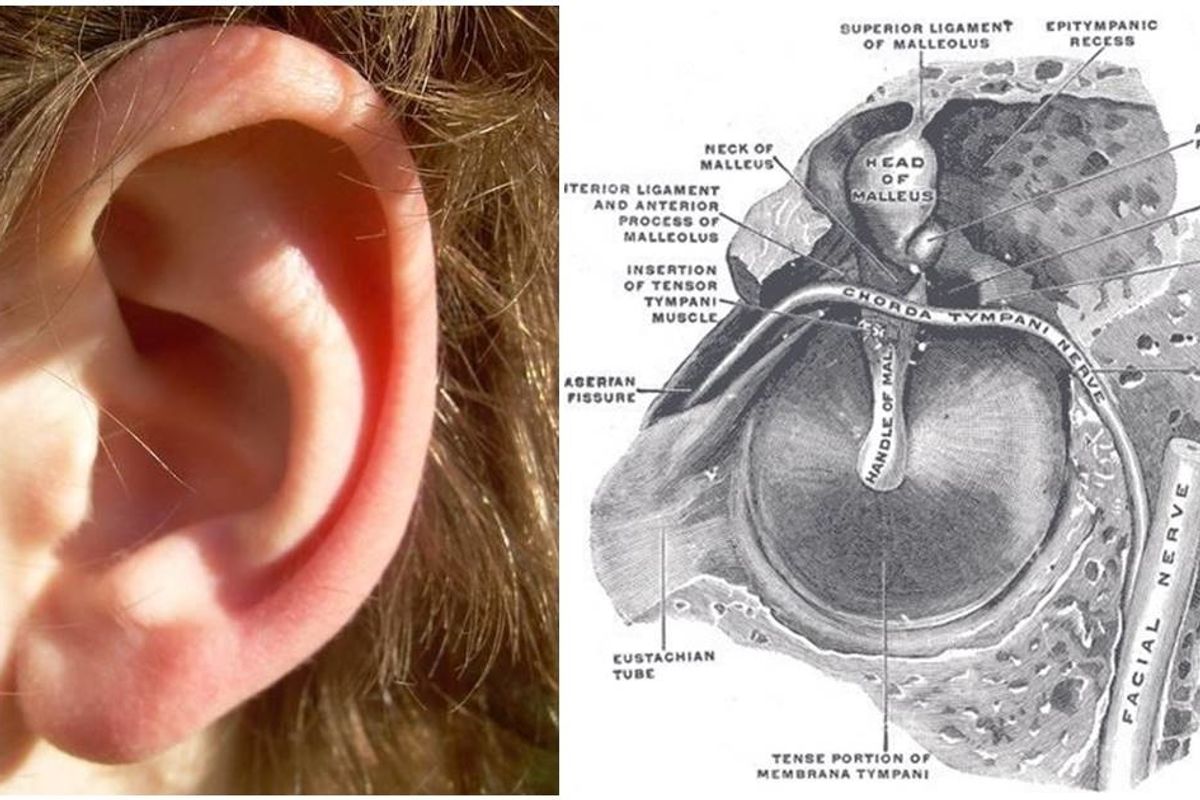Have you ever found yourself hearing a low rumbling sound in your ears, especially when you're trying to focus or during moments of silence? This fascinating phenomenon, often referred to as "ear rumble," can be both intriguing and perplexing. In this post, we’ll explore what makes our ears rumble, delving into the anatomy and science behind it. So, let’s get started on this auditory adventure!
The Anatomy of Ear Rumble

Understanding ear rumble requires a bit of knowledge of the ear's anatomy and how it functions. Our ears are complex organs that play a crucial role in hearing and balance. The main components include:
- Outer Ear: This includes the visible part of the ear (pinna) and the ear canal, which funnels sound waves to the eardrum.
- Middle Ear: Here, sound vibrations are transmitted through three tiny bones called ossicles (malleus, incus, and stapes) that amplify sound.
- Inner Ear: This contains the cochlea and vestibular system, essential for transforming sound vibrations into nerve signals sent to the brain.
One key player in the ear rumble phenomenon is the tensor tympani muscle. This small muscle is attached to the eardrum and can tighten in response to loud sounds, effectively reducing the amount of noise that enters the inner ear. When this muscle contracts, it can create a rumbling sensation, which is interpreted as an "ear rumble."
Among other factors, the eustachian tube also plays a significant role. It helps regulate air pressure in the middle ear and can cause a rumbling sound when it opens or closes, usually in response to swallowing or yawning.
In summary, ear rumble originates from a combination of muscular contractions and pressure changes within the ear anatomy. This interaction reveals just how intricate and fascinating our auditory system really is!
How Many People Can Rumble Their Ears?

Have you ever tried to rumble your ears and found that you can do it with ease? You're not alone! But just how many people can actually perform this quirky feat? Studies and anecdotal evidence suggest that the number is surprisingly low. While many of us might be able to wiggle our ears to some extent, the ability to rumble them is a different ball game.
Estimates vary, but a rough figure indicates that only about 20-30% of the population can rumble their ears voluntarily. This is significantly less than those who can wiggle them — a talent that seems a bit more common, right?
So, why the difference? Well, ear rumbling involves a specific muscle called the tensor veli palatini, located in the middle ear. This muscle, when contracted, creates a rumbling sound. But here’s the kicker: many people simply have not developed the necessary motor control over this muscle. It’s a bit like trying to roll your "R's" — some people can master it, and others struggle.
Interestingly, the ability to rumble your ears might not just be a party trick; it may have roots in ancestral behaviors related to communication or environmental awareness. If you can do it, you’ve got a fun skill that most people don’t share!
Scientific Explanation of Ear Rumble
Alright, let’s dive into the science behind ear rumbling! At the crux of this ability lies the tensor veli palatini muscle. When you rumble your ears, you’re actually contracting this muscle. But how does it work?
The tensor veli palatini connects to the Eustachian tube, which helps equalize pressure in your ears. Here’s a simplified breakdown of the process:
- Muscle Contraction: When you engage the tensor veli palatini, it pulls on the Eustachian tube.
- Pressure Difference: This tension can create a slight vacuum or pressure difference in the middle ear.
- Sound Production: The rapid changes in pressure can generate an audible rumbling noise!
But it isn’t just about noise; ear rumbling is actually a form of voluntary muscle control, which is relatively uncommon. Most of our ear muscles operate involuntarily, responding to natural stimuli like sound and pressure changes. Being able to rumble your ears, therefore, is not just a simple party trick; it's a unique blend of anatomy and motor control.
In summary, while ear rumbling may seem trivial, it’s a fascinating example of how our bodies are intricately designed. Next time you give it a try, remember the impressive science happening behind the scenes!
Factors Influencing Ear Rumble Ability
The ability to rumble your ears, often referred to as "ear wiggling," isn't simply a party trick; it's an intriguing physiological phenomenon influenced by several factors. Understanding these factors can help you appreciate why some people can easily rattle their ear muscles while others struggle.
Here are some key factors that play a significant role in ear rumble ability:
- Genetics: Your genetic makeup can significantly influence muscle control. Some individuals inherit the natural ability to control the tiny muscles around their ears, while others may not.
- Muscle Development: Just like any other muscle, the muscles that allow for ear movement can be developed through practice. Those who actively engage in ear wiggling may find an improvement over time.
- Nervous System Coordination: The ability to wiggle your ears is closely tied to the brain's coordination with the muscles. If you have a kinesthetic sense, you're more likely to succeed.
- Concentration and Focus: Many people find that the ability to rumble their ears improves with concentration and a bit of mental focus. A quiet environment where one can concentrate can aid in mastering this skill.
- Body Awareness: Being attuned to your body's movements can also play a role. If you have a good sense of body awareness, it may translate to more control over lesser-used muscles, like those around the ears.
In essence, while ear rumbling may seem trivial, it's a combination of genetics, muscle development, nervous system coordination, concentration, and body awareness. These factors together create an intriguing mechanism by which some people can express their uniqueness and skill!
Conclusion
As we wrap up our exploration of ear rumble ability, it’s clear that this seemingly simple action is anything but trivial. The capacity to wiggle or rumble one’s ears brings with it a fascinating blend of biology, psychology, and genetics. It’s a natural skill that often goes unnoticed but carries significant intrigue for those curious enough to delve into its mechanics.
Understanding the factors that influence this ability can help demystify why some people can easily execute ear movements while others find it a challenge. As we’ve seen, genetics plays a large role, but so does practice, awareness, and mental focus. So, if you find yourself envious of someone’s ear wiggling prowess, don’t worry! With patience and practice, many can cultivate this unique skill.
Ultimately, the ability to rumble your ears is more than just a quirky talent; it's a reminder of the marvels of human anatomy and the diverse range of abilities we possess. Whether for fun or personal competition, embracing this quirky trait can add a bit of fun to our everyday lives. So, why not give it a try? You might just discover a hidden talent you didn’t know you had!
 admin
admin








